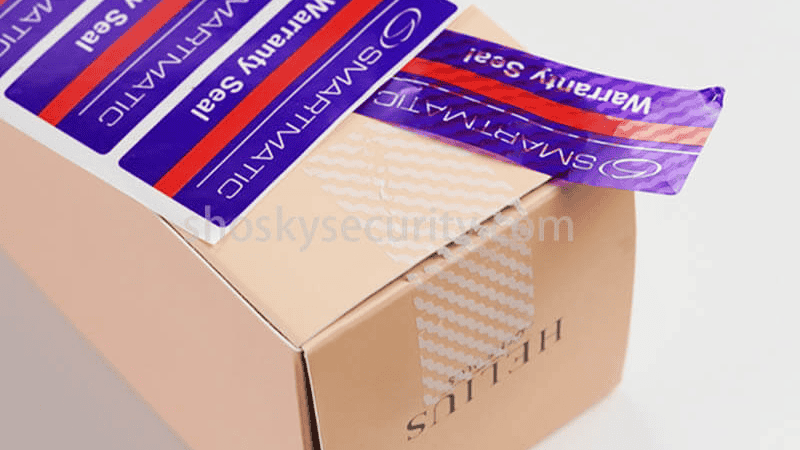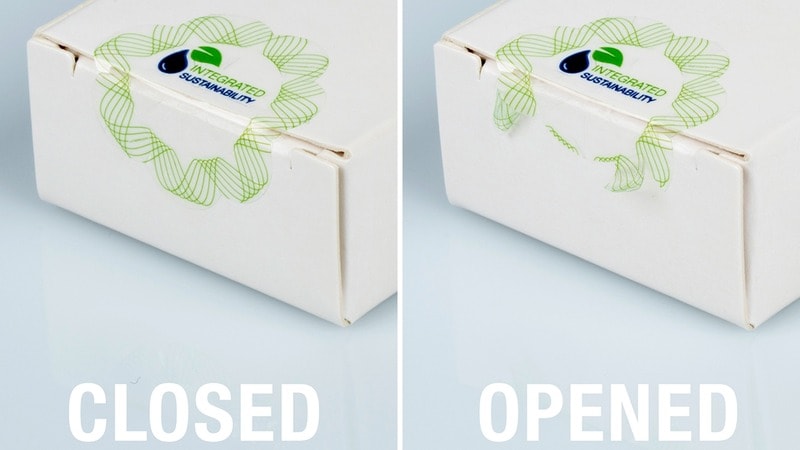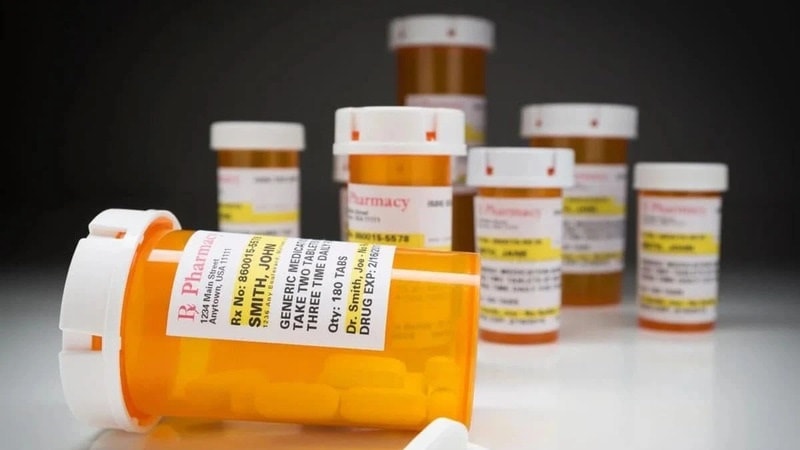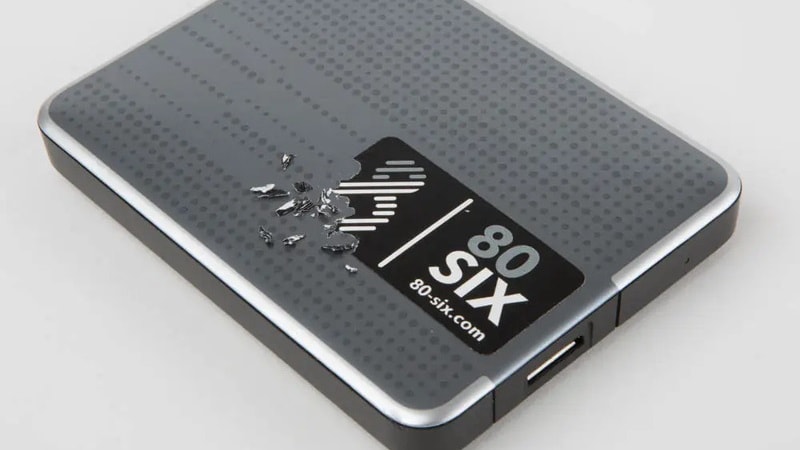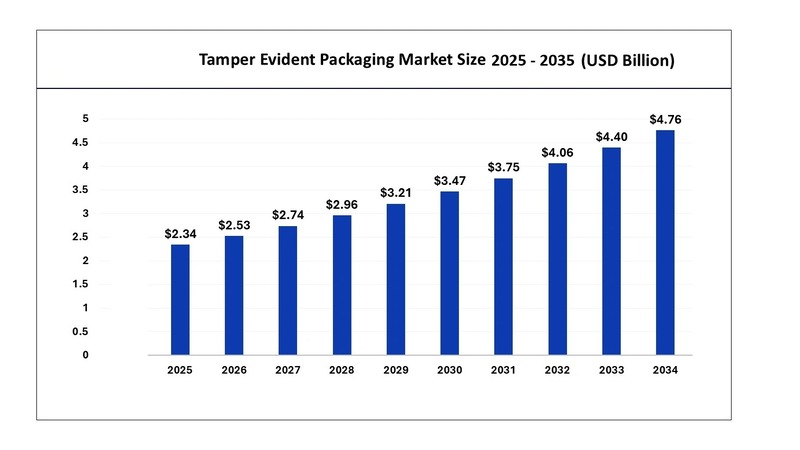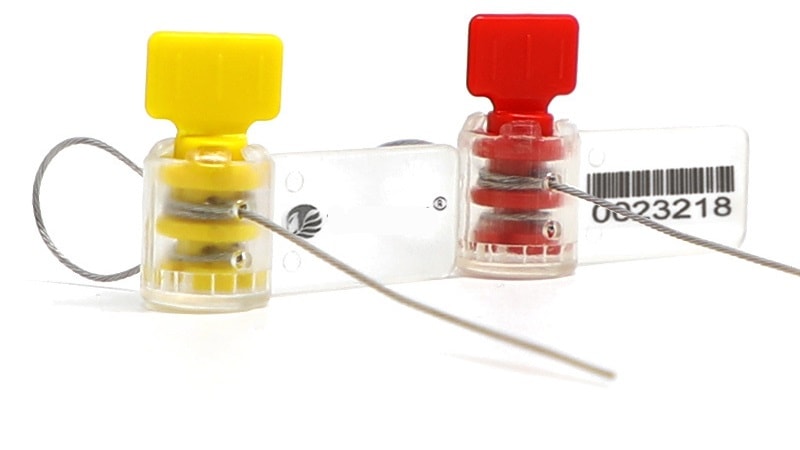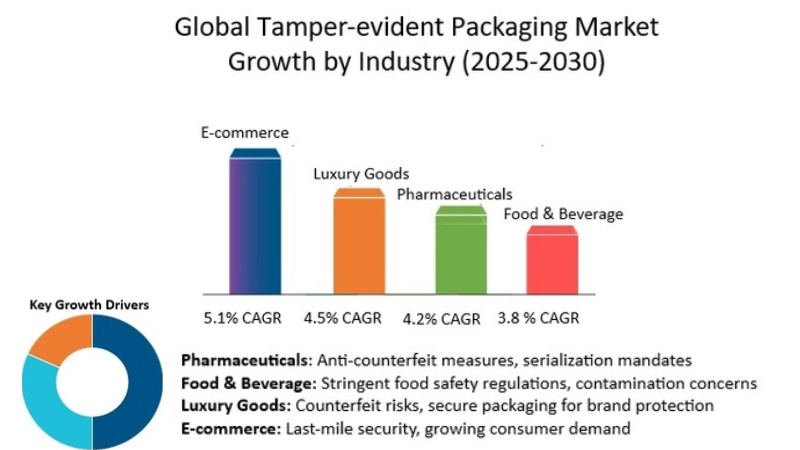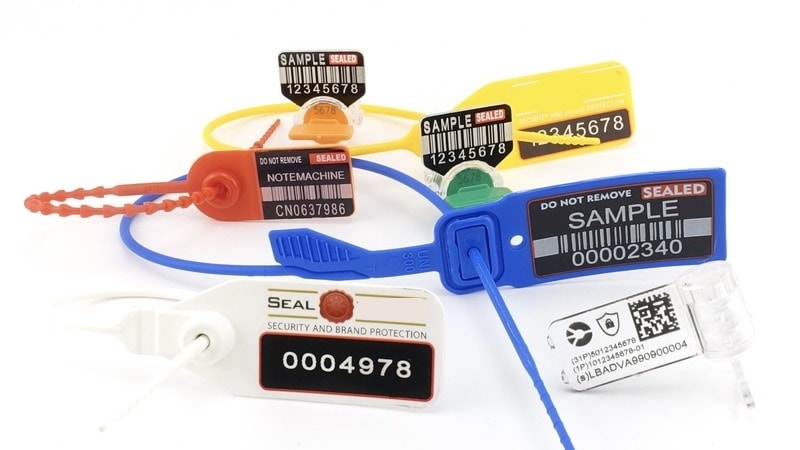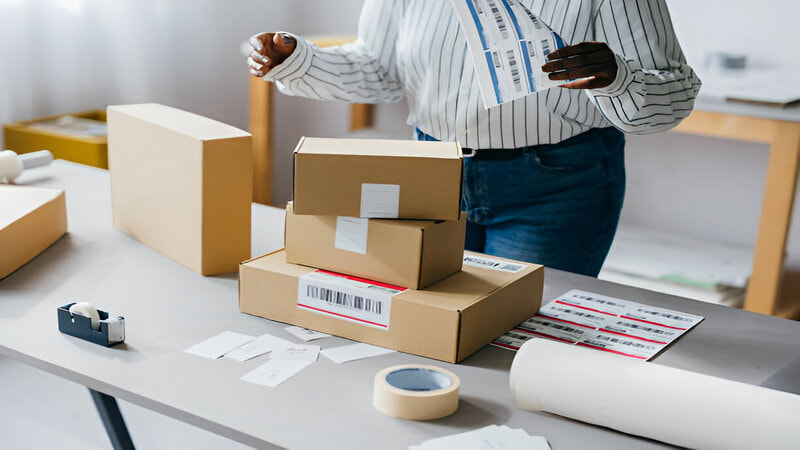The packaging industry is undergoing rapid change. With stricter regulations and increasing security threats, businesses must rethink their packaging strategies to ensure product integrity. Advanced tamper-evident solutions are becoming a necessity, not an option.
In this article, we’ll examine the top trends shaping tamper-evident packaging in 2025 and beyond. From smart technology to eco-friendly materials, we’ll also highlight the innovations that are set to redefine the future of secure packaging.
Introduction to Tamper-Evident Packaging
Tamper-evident packaging adds a layer of security to products. It shows clear signs if someone has tried to open or interfere with the package. This helps protect consumers from tampered or unsafe goods.
This type of packaging is different from tamper-proof packaging. Tamper-proof packaging prevents access entirely, while tamper-evident packaging alerts users to possible tampering. If the seal is broken or missing, customers know the product may be compromised.
The United States FDA defines tamper-evident packaging as “having one or more indicators or barriers to entry which, if breached or missing, can reasonably be expected to provide visible evidence to consumers that tampering has occurred.”
Key Drivers of the Tamper-Evident Packaging Industry
The tamper-evident packaging industry is experiencing rapid growth, driven by regulatory pressures and evolving consumer expectations. These drivers are shaping market dynamics and encouraging innovation across various sectors.
- Government Regulations and Compliance: Strict packaging laws in industries like pharmaceuticals, food, and cosmetics are the key drivers of the tamper-evident market. Companies must adhere to these laws to avoid legal penalties, product recalls, and reputational damage. In Spain, the market is growing at a 3.8% CAGR due to such regulations.
- Increasing Consumer Awareness: Rising concerns about product safety and counterfeiting are pushing businesses to adopt secure packaging. Tamper-evident solutions help build consumer trust and strengthen brand credibility.
- Technological Advancements in Packaging: Innovations like RFID packaging, holographic labels, and VOID seals enhance product security. Advanced technologies help businesses remain competitive in evolving markets.
3 Key Trends Shaping Tamper-Evident Packaging in 2025
Trend 1: Smart Packaging Technologies
The integration of digital technologies with physical tamper-evident features represents one of the most significant developments in the industry. Smart packaging solutions now include:
- NFC and RFID Integration: RFID tags and NFC technology allow consumers to verify authenticity with a smartphone scan, creating unique digital fingerprints for added security.
- QR Code Authentication Systems: Unique QR codes linked to blockchain, or secure databases enable real-time product verification and track items across the supply chain.
- IoT-Connected Packaging: Smart sensors detect and report tampering attempts, with some pharmaceutical packages alerting manufacturers to unauthorized access.
The demand for tamper-evident packaging with advanced security features is expected to grow rapidly. And as counterfeiting risks increase, to stay competitive, brands need to invest in these next-generation security features that ensure authenticity.
Trend 2: Sustainable Tamper-Evident Solutions
As sustainability continues to be a driving force in packaging innovation, 2025 has seen remarkable progress in eco-friendly tamper-evident designs. Currently, the main sustainable tamper-evident solutions trends are:
- Biodegradable Security Features: Secure packaging solutions are now using biodegradable material. These materials break down in industrial composting facilities while ensuring product protection. Their adoption of tamper-evident packaging helps brands meet sustainability goals.
- Mono-Material Approaches: Manufacturers are integrating tamper-evident features into single-material packaging. This eliminates recycling challenges associated with multi-material designs. The evident packaging industry is set to benefit from these advancements as recyclability becomes a priority.
- Reduced Material Usage: Advanced engineering has led to minimalist tamper-evident designs. Some solutions use up to 30% less plastic while maintaining security. As regulations push for sustainable packaging, brands are rapidly adopting these lighter materials.
Another key development is plant-based tamper-evident adhesives, which replace synthetic glues with biodegradable alternatives. These adhesives maintain strong security while reducing environmental harm. As brands strive to balance security with sustainability, innovations like these will play a crucial role in shaping the future of tamper-evident packaging.
Trend 3: Consumer-Centric Designs
Consumer needs now play a bigger role in tamper-evident packaging design. Brands focus on both security and ease of use. New solutions help consumers quickly identify tampering while ensuring accessibility for all.
- Intuitive Opening Mechanisms: Features like tear strips and tactile indicators make packages easier to open, especially for elderly or differently-abled users.
- Clear Tampering Indicators: Color-changing inks, pattern disruptions, and holograms provide instant, unmistakable signs of tampering.
- Educational Elements: Instructions on the packaging guide consumers on how to check for tampering and engage with security features.
These tamper technology advancements build trust and confidence by ensuring that consumers can easily verify product integrity before use. At the same time, intuitive designs enhance convenience, ensuring security doesn’t come at the cost of usability.
Industry-Specific Innovations
The tamper-evident packaging industry continues to evolve with sector-specific advancements. Different industries require tailored security solutions to meet regulatory standards and consumer expectations. Here is how various industries are implementing advanced tamper-evident solutions to enhance security and meet market demands.
Pharmaceuticals and Healthcare
The evident packaging industry is set to see rapid growth in pharmaceutical security. Tamper-evident features now focus on both safety and compliance. Secure packaging solutions help prevent counterfeiting while ensuring patient safety.
Cold chain verification is becoming more advanced as well. Temperature-sensitive medications now include indicators to track exposure. These features comply with safety regulations and market demand for strict quality control. Unit-dose protection is also improving security, especially for controlled substances.
Food and Beverages
Stringent food safety regulations are driving innovation in tamper-evident packaging. Breathable security seals help maintain product integrity while allowing gas exchange. This is crucial for the food and beverages industry, which includes packaged food requiring extended shelf life.
To combat food fraud, manufacturers are incorporating forensic markers—food-safe, invisible tracers that verify authenticity. These solutions help businesses protect their brand reputation and reassure consumers.
Freshness indicators are also evolving, integrating security with quality control by alerting consumers to potential spoilage. Secure clamshell packaging and other high-protection solutions are adapting to growing market demand.
Luxury Goods and Electronics
Technological advancements in secure packaging are protecting high-value goods. Micro-perforation technologies create irreversible damage when tampered with. These solutions are widely used in the luxury and electronics sectors to prevent counterfeiting.
Embedded authentication elements offer an extra layer of security. Digital verification systems, including QR codes and NFC tags, allow users to confirm authenticity and track product history. These security measures not only prevent fraud but also enhance consumer engagement and brand experiences.
Demand Forecast in 2025 and Beyond
Projected Growth of the Tamper-Evident Packaging Market
The market is projected to reach USD 2,775.4 million by 2035, growing at a CAGR of 3.7% from 2025 to 2030. This growth is driven by the need for enhanced product safety in industries like pharmaceuticals, food, and luxury goods. Companies are focusing on smart security solutions to protect products from counterfeiting and contamination.
Investments in track-and-trace technologies are increasing as businesses look for ways to improve supply chain security. Features like QR code verification and RFID-enabled packaging are becoming more popular. These solutions allow consumers to check product authenticity before purchase.
E-commerce growth is also fueling demand for tamper-evident packaging. Online retailers are adopting secure sealing methods to protect shipments from unauthorized access. As digital shopping expands, businesses must ensure that products reach customers safely and unscathed.
Key Industries Driving Future Demand
The pharmaceutical sector is a major driver of tamper-evident packaging adoption. Governments are enforcing strict drug safety regulations to prevent counterfeit medicines from entering the supply chain. Serialization and unique identifier tracking are now mandatory in many regions.
In the food and beverage industry, contamination concerns are increasing. The rise of meal delivery services and online grocery shopping has made food safety a priority. Secure sealing films, breakable caps, and tamper-evident security labels are widely used to protect products.
Luxury brands and cosmetic companies are also investing in tamper-evident packaging. Counterfeit goods continue to flood the market, affecting brand reputation and consumer trust. Security features like void labels, holographic seals, and smart authentication systems are helping companies fight fraud.
Market Growth by Industry (2025-2030)
The global tamper-evident packaging market is projected to expand steadily during the forecast period, driven by rising consumer demand and stricter regulations. The evident packaging industry set for growth will see varying compound annual growth rates (CAGR) across different sectors.
| Industry | CAGR (2025-2030) | Key Growth Drivers |
|---|---|---|
| Pharmaceuticals | 4.20% | Anti-counterfeit measures, serialization mandates |
| Food & Beverage | 3.80% | Stringent food safety regulations, contamination concerns |
| Luxury Goods | 4.50% | Counterfeit risks, secure packaging for brand protection |
| E-commerce | 5.10% | Last-mile security, growing consumer demand |
As the industry is set to grow, businesses are investing in new authentication technologies to meet evolving security needs. Innovations in materials and smart packaging will continue shaping the global tamper-evident packaging market, ensuring product integrity and regulatory compliance.
Challenges, Considerations, and Future Outlook
The demand for secure packaging is increasing, but balancing tamper evidence with accessibility remains a challenge. Packaging must be strong enough to prevent tampering yet easy for consumers to open. Finding a balance between security and usability requires continuous innovation.
Cost is another major concern. Advanced tamper technologies often require specialized materials and processes, increasing production expenses. Businesses must evaluate these costs while ensuring consumer safety.
At the same time, counterfeiters are constantly evolving their methods as well, making it necessary for companies to adopt multi-layered security solutions. Digital tracking, forensic markers, and enhanced tamper-evident technologies are becoming essential in combating fraud.
Looking ahead, innovation will drive the next phase of tamper-evident packaging. The following innovations are set to reshape the market in the coming years:
- AI Applications: AI-powered inspections will improve tamper detection, accessible via smartphones.
- Blockchain Integration: Supply chains will use blockchain for secure tracking and transparency.
- Biometric Authentication: High-value products will adopt biometric security for controlled access.
- Circular Economy Models: Reusable tamper-evident designs will enhance security and sustainability.
And as technology advances, businesses will adopt these innovations to protect consumers and comply with safety regulations. The global tamper-evident packaging market will continue expanding, with growing consumer awareness pushing brands toward more secure and sustainable packaging solutions.
FAQs
How is RFID technology used in tamper-evident packaging?
RFID tags track products throughout the supply chain. They provide real-time data, helping brands improve security and prevent tampering.
What are the benefits of sustainable tamper-evident packaging solutions?
They reduce waste, use eco-friendly materials, and maintain product security.
How will tamper-evident packaging impact future consumer expectations?
Consumers will demand stronger protection against counterfeiting and contamination.
Conclusion
The global tamper-evident packaging market is growing as security and sustainability take center stage. New technologies ensure better protection against fraud and counterfeiting. Rising consumer awareness about product safety is pushing brands to innovate. Don’t fall behind—embrace future tamper-evident packaging now.
Secure Your Products with Shosky Security’s Future-Ready Tamper-Evident Solutions
The evident packaging industry is set for major growth. And Shosky Security is here to provide you with smart security solutions to stay ahead! So, strengthen your security today. Contact us for more details!
